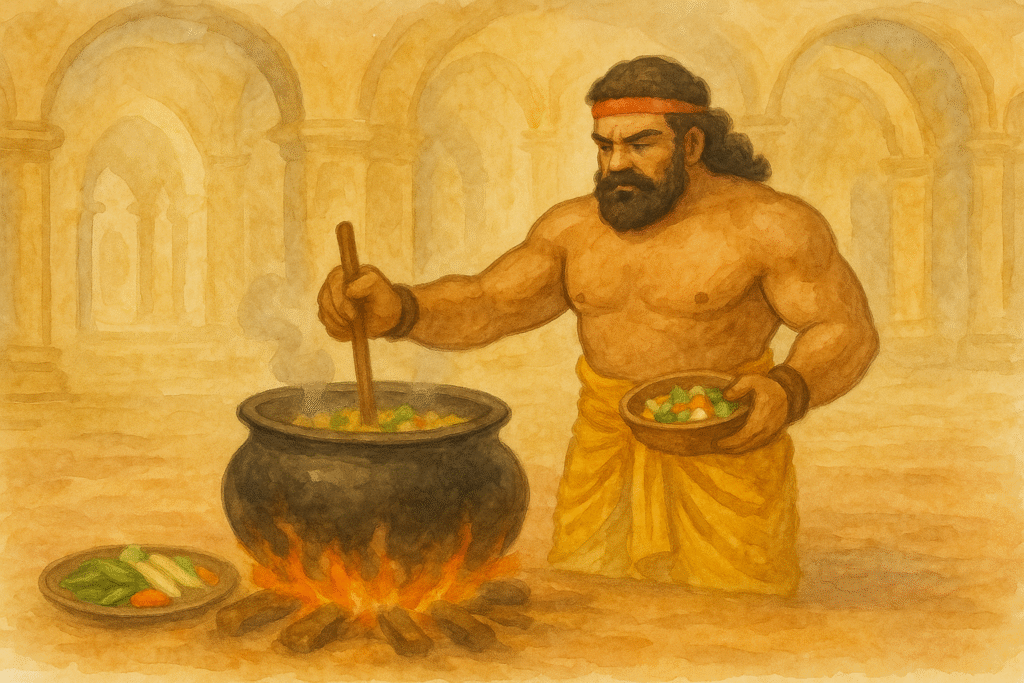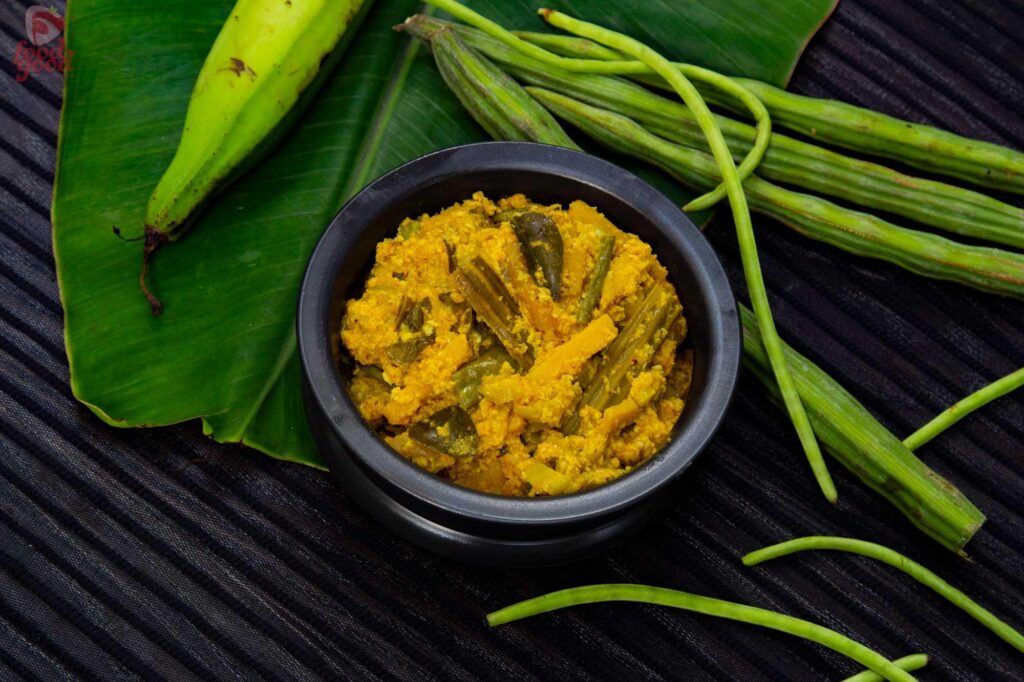Aviyal is one of the most important dishes in a Kerala sadya. This thick, coconut-based mixed vegetable curry brings colour, flavour, and nutrition to the banana leaf. It’s not just a tasty side dish – it has a rich history and a popular myth connected to it, showing how deeply rooted it is in Kerala’s food culture.
There is a well-known story from the Mahabharata which says that Bheema, the strongest of the Pandavas, created aviyal during their exile when they lived in disguise in King Virata’s palace. Bheema took up the job of a cook in the royal kitchen. One day, with a variety of vegetables left in the kitchen and a big feast to prepare, he decided to chop everything together, cooked them with coconut, seasoned it with curry leaves and coconut oil – and thus, aviyal was born. The dish was loved by everyone in the palace and became a regular part of the meals.

There is also a historical belief that aviyal started in Travancore (Thiruvananthapuram) during the Murajapam ritual at the Padmanabhaswamy temple. There, leftover vegetables from the temple kitchen were combined to create a no-waste curry – which later became a regular part of sadya.
Aviyal is also very healthy. It uses many seasonal vegetables like yam, raw banana, ash gourd, drumstick, carrot, and snake gourd, making it rich in fibre and nutrients. It is lightly cooked, uses very little oil, and is easy to digest. The coconut used in it keep the body cool, which is perfect for Kerala’s climate. In a sadya, aviyal adds not just taste, but also balance – both in tradition and in health.
Kerala Sadya Aviyal
Ingredients
Instructions
-
First, cut all the vegetables into 1 to 1½ inch long slices and wash them well. Use vegetables like yam, yellow cucumber, snake gourd, drumstick, green chillies, yard-long beans, and raw banana.
-
In a cooking vessel, add a tablespoon of coconut oil and a sprig of curry leaves. Add yam, yellow cucumber, snake gourd, drumstick, green chillies, and yard-long beans. Cook for a few minutes.
-
Add turmeric powder, chilli powder, and salt. Mix well and continue to cook.
-
Now add raw banana slices. Stir gently and cook until all the vegetables are tender but not mushy.
-
While the vegetables are cooking, grind or crush grated coconut with cumin seeds to a coarse paste without adding water.
-
Add a little tamarind extract to the cooked vegetables and mix well.
-
Add the ground coconut paste to the vegetable mix and combine gently.
-
Finish the dish by adding a few curry leaves and drizzling a teaspoon of coconut oil on top. Mix lightly.


